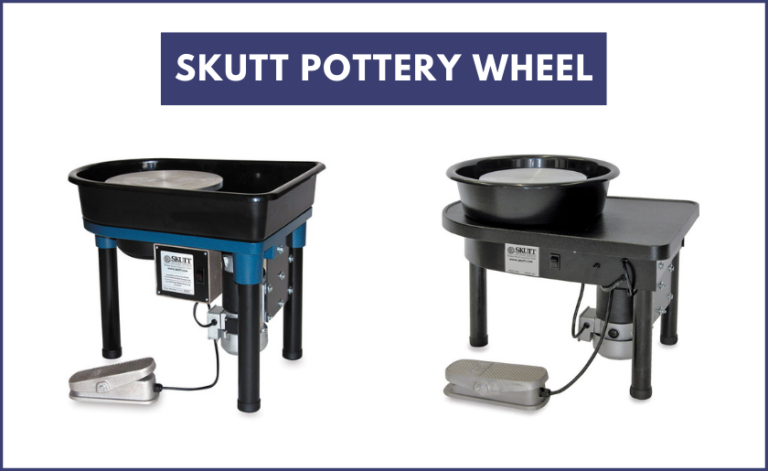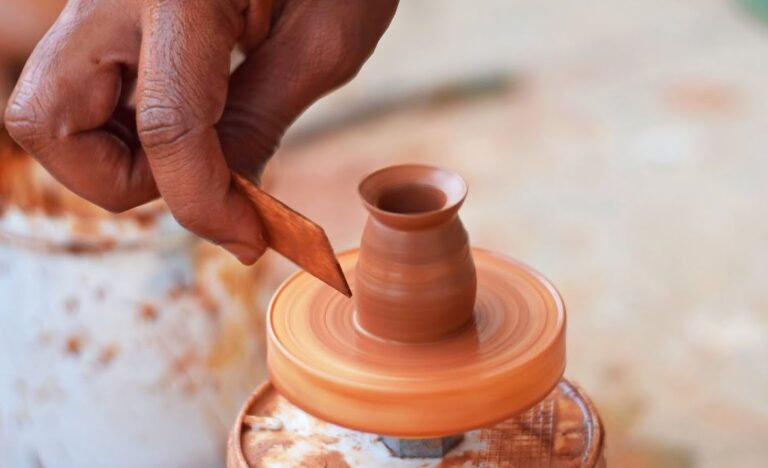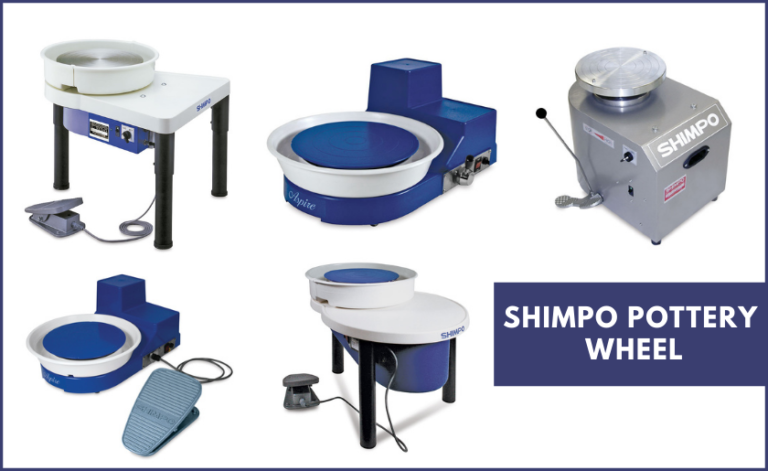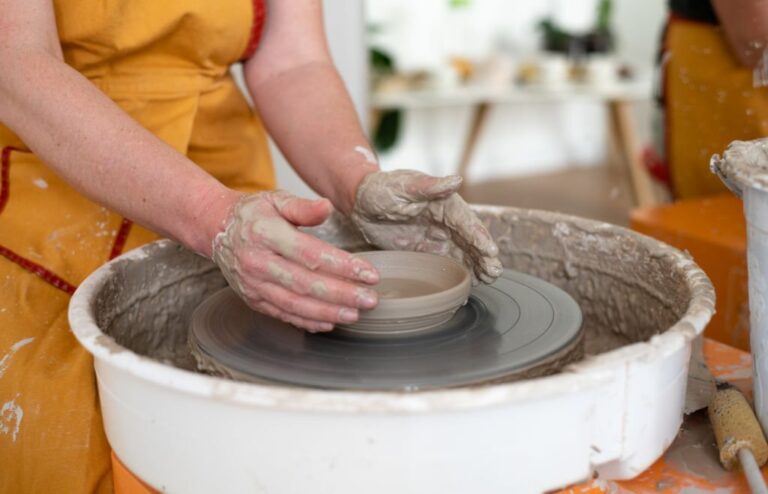Mend Your Pottery Woes: How to Fix Broken Pottery
To fix broken pottery, first gather the broken pieces and clean them thoroughly. Then use a strong adhesive to glue the pieces together, and let it dry completely.
Porcelain, ceramic, or china pottery is a beautiful and delicate item that is easily breakable. When such pottery is damaged, the thought of discarding it can be devastating. Fortunately, fixing broken pottery is not as difficult as one might think.
With a little patience and care, one can effortlessly repair broken pottery. This article will guide you on how to fix broken pottery quickly and easily. It’s essential to repair broken pottery properly to prevent any further damage. Let’s dive in and learn how to restore your broken pottery to its desirable state.
Types Of Pottery Damage
Mend Your Pottery Woes: How To Fix Broken Pottery
Pottery is an art that has been around for centuries. It is made by shaping clay into a form and then heating it to high temperatures. While pottery can be incredibly durable, accidents can happen and result in damage to the piece.
We will detail the different types of damage that can occur to pottery and how to fix them.
Chips
Chips can occur when a piece of pottery is dropped or bumped against a hard surface. These small pieces of pottery can be frustrating, and it’s important to address them quickly to prevent further damage.
- Examine the area around the chip for any loose or broken pieces that might need to be removed before repair.
- Sand the chip with fine-grit sandpaper until it’s smooth to the touch.
- Apply a thin layer of epoxy glue to the chipped area.
- Let the epoxy dry completely before sanding the area again, so the chip and surrounding area are smooth.
Cracks
Cracks can occur due to age, temperature changes, or improper handling. Depending on the severity of the crack, repairing it may require a more delicate touch.
- Apply a small amount of diluted white glue to the crack and use a brush to spread it over the area.
- Wipe away any excess glue with a damp cloth before it dries.
- Place the piece under a weighted object and let the glue dry for several hours.
- Lightly sand the repaired area so that the crack is no longer visible.
Breaks
Breaks are perhaps the most severe type of pottery damage. A major break can cause multiple pieces, and the repair process can be tricky, especially if the pottery is valuable.
- Collect all the pieces and carefully examine them to ensure you have all the necessary fragments in one piece.
- Use epoxy glue to reattach each piece together, taking care not to miss any spots.
- Apply a thin layer of glue to the newly constructed piece, making sure the glue is smooth and invisible to the eye.
- Place the pottery under a weighted object and leave it to dry for several hours or overnight.
Pottery damage can happen to anyone, and it’s important to know how to fix them. Remember, the severity of the damage can affect the value of the piece, so it’s essential to address any issues quickly. With a little patience and the right tools, you can restore your pottery to its former glory.
Tools And Materials
Essential Tools And Materials For Repairing Broken Pottery
Pottery is an ancient form of art that has stood the test of time. But it’s not indestructible, and sometimes accidents happen, and your favorite pottery can break. However, before you throw it away, know that you can try your hand at fixing it yourself.
To repair broken pottery, you need the right tools and materials. Here are a few things you should get:
- Glue or epoxy: Glue is the most common tool used for repairing broken pottery. It’s easily accessible and affordable. However, if you want a stronger bond, you should consider using epoxy, which is a two-part compound that dries quickly and creates a durable bond.
- Sandpaper and razor blades: Sandpaper and razor blades are necessary to clean and sand the edges of the broken pieces, so they fit correctly.
- Brushes: You need brushes to apply the glue or epoxy to the broken pottery. A small brush is suitable for small cracks, while a larger one is ideal for more extensive repairs.
- Clamps and rubber bands: These will help you hold the broken pieces together while the glue or epoxy dries and sets.
Where To Get These Tools And Materials
You can find these tools and materials quickly at your local hardware store, art supply store or online retailers. Just make sure you get the right type of glue or epoxy as not all are suitable for pottery repair. Always read the labels and choose the best option at an affordable price.
Precautions To Take When Using These Tools And Materials
When repairing broken pottery, be careful not to damage it further. Here are some precautions you should follow:
- Protective gear: Wear gloves and eye protection to prevent any injuries.
- Clean surface: Clean the surface of the pottery before applying the glue or epoxy to allow for a better bond.
- Weighty objects: Do not use too many clamps or heavy weights as this may cause extra stress to the pottery, creating more cracks.
- Ventilated space: Ensure you are in a well-ventilated area as some adhesives can release fumes.
By following these precautions and using the right tools and materials, you can restore your broken pottery to its former glory. It’s a satisfying and cost-effective way to bring your art back to life.
How To Repair Chips And Cracks
How To Repair Chips And Cracks In Pottery
Repairing minor chips and cracks in pottery is a simple and easy process that anyone can do, even if you have no previous experience. With a little patience, the right materials, and a bit of know-how, you can restore your broken pottery to its former beauty.
Here are some recommended techniques for fixing minor chips and cracks in pottery using glaze or epoxy:
Using Glaze
Glaze is a type of coating that can be applied to the surface of ceramics and pottery to provide a protective layer while enhancing the appearance of the object. Here are the steps to repairing minor chips and cracks using glaze:
- Clean the broken area with a damp cloth thoroughly to remove any dirt or dust.
- Mix the glaze according to the manufacturer’s instructions.
- Using a small brush or applicator, apply a small amount of glaze to cover the chipped or cracked area and let it dry.
- Repeat the process until you have fully covered the area, and the chip or crack is no longer visible.
- Let the pottery dry for 24 hours, and then fire the pottery in a kiln at the recommended temperature to add strength to the repair.
Using Epoxy
Epoxy is a type of adhesive that bonds materials together, including pottery. It is a popular method for repairing chips and cracks on pottery. Here’s how to fix small chips and cracks on your pottery using epoxy:
- Clean the damaged area of the pottery with a damp cloth.
- Mix the epoxy according to the instructions given on the package.
- Using a small brush or applicator, carefully apply the epoxy to the crack or chip.
- Press the pieces of pottery together using gentle pressure to ensure the epoxy has bonded the pieces together.
- Let the pottery dry for 24 hours and then use fine-grit sandpaper to smooth any bumps or uneven surfaces on the repair.
- If needed, apply some paint to match the color of your pottery and let it dry.
Note: some types of pottery, such as porcelain, require special considerations while repairing. It is always recommended to check manufacturer guidelines or consult with a professional if you have any uncertainties about repairing damaged pottery.
Repairing small chips and cracks in pottery is a straightforward process. With the right technique, equipment, and materials, you can make your broken pottery look as good as new. So, instead of tossing your damaged pottery, try repairing it and experience the satisfaction of restoring a cherished piece of art.
How To Repair Broken Pottery
Mend Your Pottery Woes: How To Fix Broken Pottery
Pottery is not only a craft but also a form of art, each piece unique and beautiful. Unfortunately, accidents happen, and your favorite pottery might break in an instant. However, broken pottery doesn’t necessarily mean it’s a lost cause as you can repair it back to its original form.
We’ll teach you how to fix broken pottery using only a few tools and tricks.
Detail How To Repair Pottery That Has Been Completely Broken, Including Large Cracks Or Missing Pieces.
If your broken pottery has large cracks or missing pieces, it may seem hopeless, but don’t fret. You can fix it by using the following steps:
- Clean the broken pieces of pottery and remove any dirt or debris from them.
- Apply a small amount of two-part epoxy adhesive onto one side of the broken pottery and the corresponding piece. Use a toothpick or a small brush to apply a thin and even layer of the adhesive.
- Bring the broken pieces of pottery together and press firmly to make the pieces stick together.
- Wipe off any excess adhesive that seeps out from the broken surface. Allow the glue to dry for at least 24 hours.
- Once the adhesive is dry, sand lightly the broken edges until smooth using a fine grit sandpaper, and clean the repaired area with a dry cloth.
Explain How To Join The Pieces Using Epoxy And How To Reinforce The Repaired Areas To Ensure The Strength And Integrity Of The Piece.
Now that you know how to bring the broken pottery together, it’s time to reinforce the repaired areas to ensure the strength and integrity of the piece. Follow the steps below:
- Apply a small amount of the two-part epoxy adhesive onto the repaired area and the surrounding broken edges.
- Cut a piece of a fiberglass mesh tape that is slightly smaller than the repaired area.
- Place the tape over the broken area and press it firmly using a brush, ensuring that the tape adheres to the surface of the pottery.
- Apply another layer of two-part epoxy adhesive over the mesh tape and broken edges.
- Let the adhesive dry for at least 24 hours.
- Sand the surface of the pottery once again until it is smooth using a fine grit sandpaper.
- Wipe off any dust with a dry cloth, and your repaired pottery is now ready to use and display.
Fixing your broken pottery may seem like a daunting task, but with a little time and patience, you can make it look as good as new. Just remember to clean the broken pieces thoroughly, use a two-part epoxy adhesive, and reinforce the repaired areas with fiberglass mesh tape.
With this knowledge, you can save your favorite pottery pieces from the scrap heap and add them back to your collection.
Aftercare And Maintenance
Once you have successfully repaired your broken pottery, it is essential to take care of it to ensure it lasts as long as possible. Here are some guidelines on how to care for your repaired pottery pieces moving forward:
Cleaning
- Always clean the pottery by hand with a soft cloth. Avoid using scouring pads or abrasive materials that could scratch the surface.
- Use warm water and mild soap to clean the pottery, and afterward, rinse it thoroughly with cold water.
- When cleaning a repaired pottery piece, avoid using harsh chemicals like bleach or cleaning solutions that could damage the repaired areas.
Storage
- Store your repaired pottery in a place where it cannot fall or be bumped, leading to further damage or breakage.
- If you need to stack your pottery, make sure to put a soft cloth or tissue paper between pieces to avoid knocking or scratching each other.
- Always keep your repaired pottery out of direct sunlight as it can discolour over time.
Precautions
- If the repaired pottery piece is an item of utility or function, such as a vase or a dish, take extra care when using it to avoid unnecessary stress. Avoid using it for something other than its intended purpose.
- Avoid exposing the repaired pottery to sudden temperature changes or extreme temperatures. For example, do not place a hot pot on it or put it in the freezer.
- If the repaired pottery piece has been repaired using traditional techniques, such as kintsugi, it may not be suitable for use with food or drinks.
By following these practical tips, you can ensure that your repaired pottery stays in good condition and lasts as long as possible. Remember, proper care and maintenance are essential to preserving the beauty and integrity of your treasured pottery pieces.
Frequently Asked Questions For How To Fix Broken Pottery
How Do I Fix A Broken Pottery At Home?
You can fix broken pottery by applying ceramic glue to the broken pieces and sticking them together. Apply pressure for a few minutes and let it dry for at least 24 hours.
Can I Use Regular Glue To Fix Pottery?
No, regular glue is not recommended for fixing pottery as it’s not strong enough to withstand heat and moisture. Use ceramic glue specially designed for pottery repair.
How Long Does It Take For Pottery Glue To Dry?
Pottery glue can take anywhere from 24 hours to one week to dry completely, depending on the brand and type of glue you’re using. Be patient and avoid moving the repaired item until it’s fully set.
What Should I Do If The Pottery Chip Is Missing?
If you don’t have the missing chip, you can use a two-part epoxy putty to fill the gap. Mix equal parts of the putty, apply it to the missing area and let it dry completely before sanding it smooth.
Can I Still Use The Pottery After Repair?
Yes, you can use the pottery after repair, but it may not be as strong or water-resistant as it was before. Avoid exposing the repaired item to high heat or direct flame, and hand wash only.
Conclusion
After following the aforementioned steps, you can fix your broken pottery with ease. Remember to be careful while handling the broken pieces and always prioritize your safety. With a little patience and skill, you can restore your beloved pottery to its former glory.
Filling the cracks and gaps with epoxy glue and reinforcing it with a metal wire or ribbon can make it even stronger. You can also use various decorative techniques to make the repaired pottery look even better than before. Taking good care of your pottery can prevent it from breaking in the first place.
However, accidents can still happen. By using the guidelines mentioned in this blog post, you can breathe new life into your broken pottery, and keep it looking beautiful for years to come.





